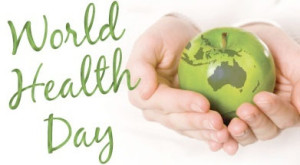World Health Day 2014 ”“ April 7 – Vector-borne diseases
With this World Health Day, WHO is drawing attention to a group of diseases that are spread by insects and other vectors, the heavy health and economic burdens they impose, and what needs to be done to reduce these burdens.
Vector-borne diseases cause more than one million deaths each year. But death counts, though alarming, vastly underestimate the human misery and hardship caused by these diseases, as many people who survive infection are left permanently debilitated, disfigured, maimed, or blind.
As vectors thrive under conditions where housing is poor, water is unsafe, and environments are contaminated with filth, these diseases exact their heaviest toll on the poor ”“ the people left behind by development. Measures that control the vectors, the agents of disease, provide an excellent, but underutilized opportunity to help these people catch up. This is one World Health Day message: countries and their development partners need to do much more to seize this opportunity.
Malaria, which is spread by mosquitoes, is the best-known and the biggest killer among vector-borne diseases, but there are others. Some, like dengue and yellow fever, tend to erupt in large outbreaks that can paralyze health systems and cause considerable economic and social disruption. Each year, around half a million patients with severe dengue require hospitalization.
Onchocerciasis causes blindness, chikungunya causes severe joint pain that can last for weeks, and Chagas disease in its late stage can cause heart failure and early death in young adults. Japanese encephalitis can permanently damage the central nervous system. Schistosomiasis ”“ the most widespread of all these diseases ”“ contributes to poor nutritional status and poor school performance. Some forms of leishmaniasis are rapidly fatal; others cause severe facial disfigurement. Around 120 million people are currently infected with lymphatic filariasis, and about 40 million of them are disfigured and incapacitated by the disease.
Lost productivity is one consequence. Stigma and social exclusion are additional sources of misery, especially for women.
Many of these diseases have been historically confined to distinct geographical areas, but this situation has become more fluid due to a host of ills, including climate change, intensive farming, dams, irrigation, deforestation, population movements, rapid unplanned urbanization, and phenomenal increases in international travel and trade. These changes create opportunities for vectors and the diseases they spread to take up residence in new areas.
For all of these diseases, vector control is a powerful preventive tool that is not used to its full potential. The massive use of insecticides in the 1940s and 1950s successfully brought many important vector-borne diseases under control.
Complacency set in. Control programmes were dismantled. Resources dwindled. Expertise was lost. And the diseases roared back with a vengeance ”“ and a vanished infrastructure for their control.
In another worrisome trend, vectors in several countries are developing resistance to a highly effective class of insecticides that is also the most affordable.
We need to recreate the momentum for vector control and the fundamental capacities that underpin it, including staff with technical expertise, stronger surveillance systems, and better laboratory infrastructure. For vector-borne diseases, control programmes never tread water.
They either surge ahead or sink. This is another key message for World Health Day: countries and their development partners must appreciate the urgent need to act before an alarming situation deteriorates any further.
A global health agenda that gives higher priority to vector control could save many lives and avert much suffering. Doing so is especially important for diseases like dengue and chikungunya, which have neither a vaccine nor an effective treatment.
For diseases that can be prevented by a vaccine or effectively treated, vector control works as a complementary measure that can shrink the disease burden faster.
Taking action is entirely feasible. WHO promotes integrated vector management as the best approach to strengthen vector control. This approach uses a range of interventions, from indoor residual spraying to the use of natural insect predators, in combination and in a value added way. Integrated management makes sense as many vector-borne diseases overlap geographically, some vectors cause several diseases, and some interventions provide protection against several vectors.
The control of vector-borne diseases can make a major contribution to poverty reduction, as it precisely targets the poor. It is my sincere wish that this World Health Day will invigorate vector control and give it the high profile it deserves. No one in the 21st century should die from the bite of a mosquito, a sandfly, a blackfly or a tick.
Dr Margaret Chan
Director-General, World Health Organization
Short URL: https://indiandownunder.com.au/?p=3283

